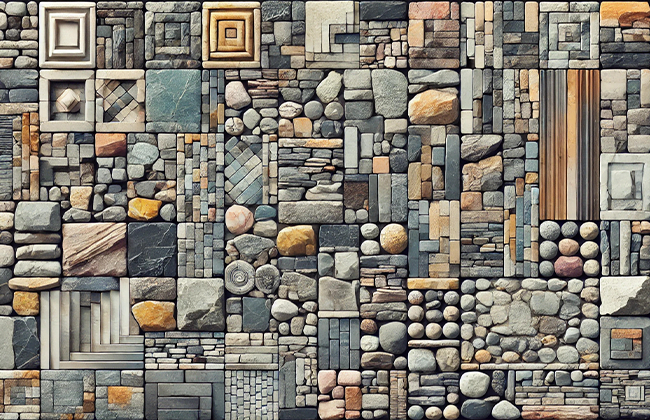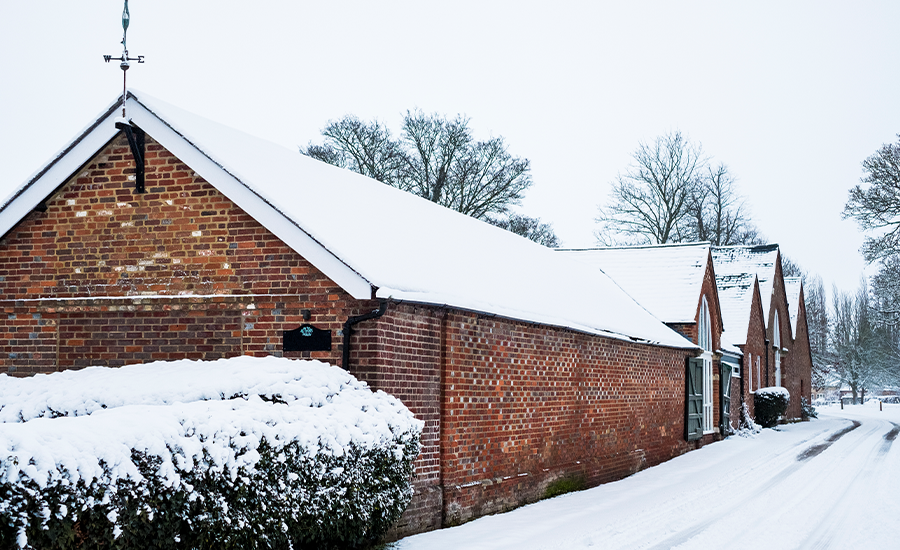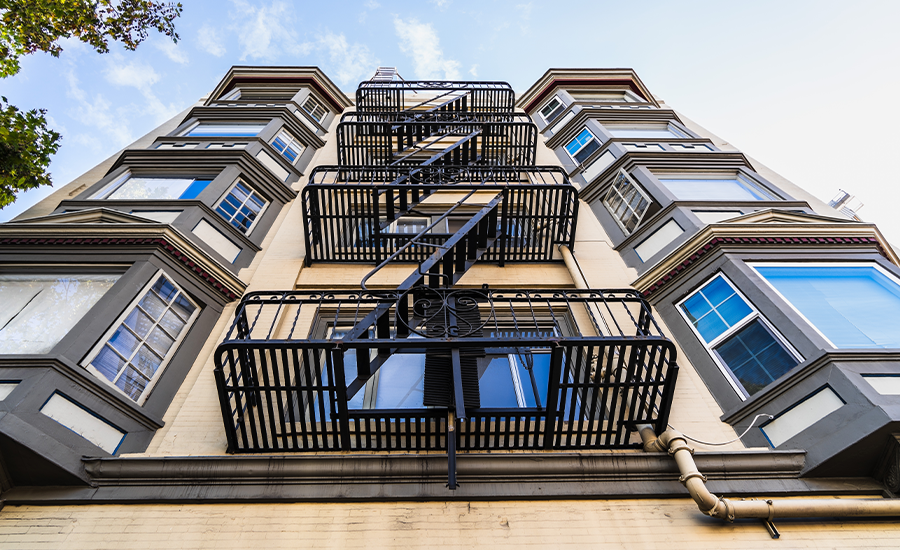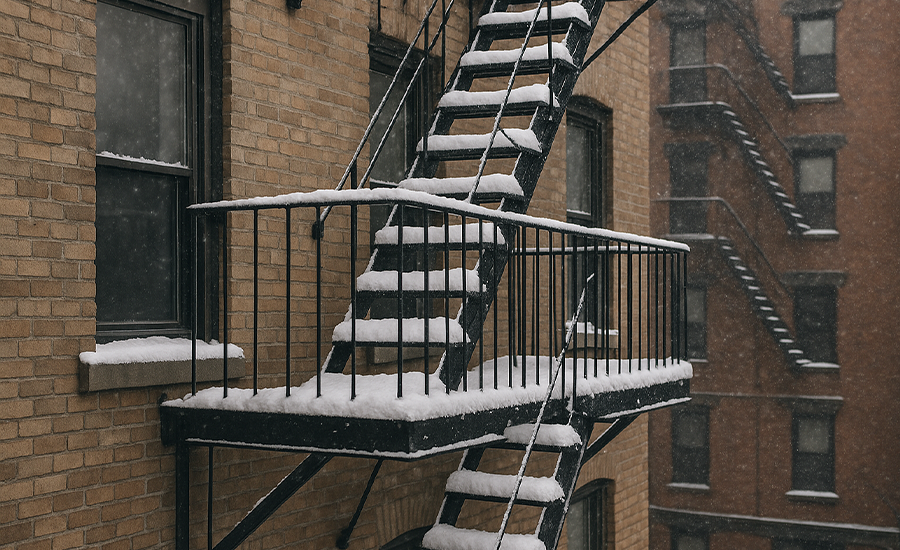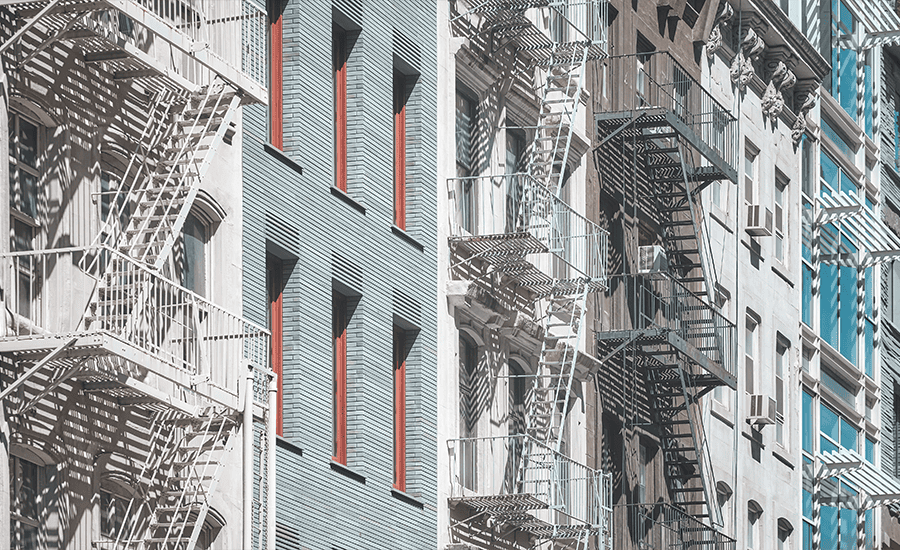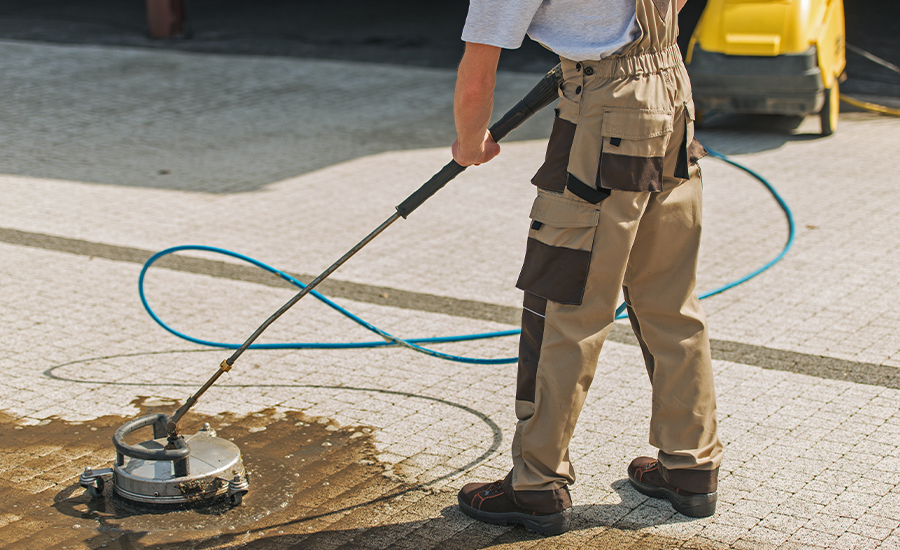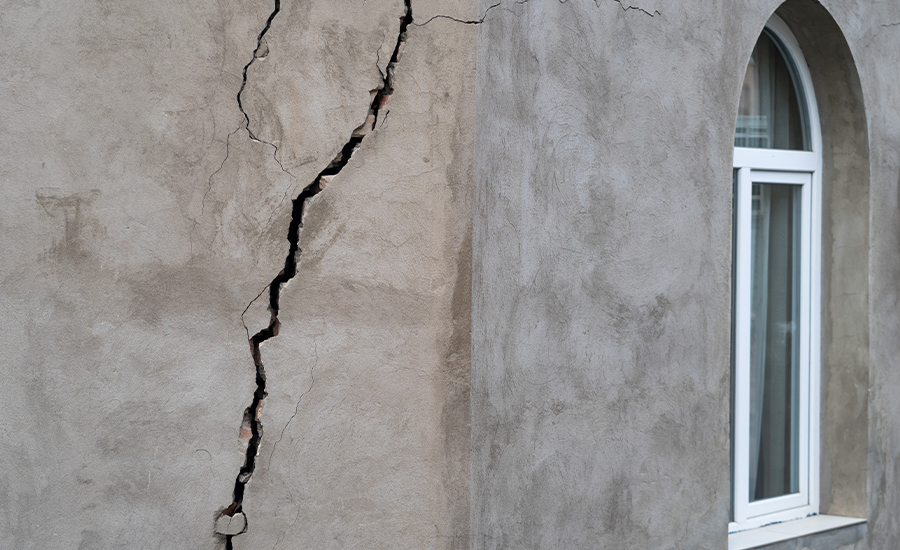Exploring the various types of stone masonry reveals a blend of artistry and durability that has been cherished throughout history. From the rugged allure of rubble masonry to the refined precision of ashlar masonry, each type offers unique benefits for different construction needs. This guide delves into the traditional techniques and modern advancements that continue to make stone masonry a favored choice for both historical restorations and contemporary structures.
What is Stone Masonry?
Stone masonry is the art of constructing buildings by meticulously placing cut or uncut stones together with mortar. This ancient building technique has created many of the world’s most enduring structures, showcasing the durability and aesthetic appeal of stone as a construction material. Masons use a variety of stones like granite, limestone, and sandstone, each selected for specific properties that meet the structural and design requirements of the project.
This craft is not only about building strong walls and arches; it’s a testament to human ingenuity in using natural materials to craft spaces that last across centuries. The knowledge and skills passed down through generations of masons continue to influence modern construction, bridging the gap between past and present building techniques. Next, we explore the different types of stone masonry that have evolved, each suited to various architectural styles and functions.
Different Types of Stone Masonry
Stone masonry can be divided into several types, each with unique characteristics and uses. Understanding these types helps in choosing the right style for specific construction needs, whether it’s for aesthetic appeal, durability, or cost-effectiveness.
1. Rubble Stone Masonry
Rubble masonry is one of the earliest forms of stone construction and is still widely used due to its economic and practical benefits.
a) Uncoursed Random Rubble
This type uses stones of varied sizes and shapes that are not dressed or cut in any particular geometry. Workers lay the stones without any uniformity, which might make the process seem chaotic but results in a strong bond with the help of ample mortar. This technique ensures even pressure distribution throughout the structure, providing unique visual interest and considerable strength.
b) Coursed Rubble Masonry
Contrary to the random rubble, coursed rubble masonry arranges the stones in uniform horizontal layers. Each course is laid to a uniform height with stones, which are roughly dressed. This style not only enhances the structural integrity but also offers a neater appearance compared to uncourse rubble, making it suitable for visible walls and public buildings.
c) Polygonal Rubble Masonry
Polygonal rubble masonry takes its uniqueness from the polygonal shapes of the stones used. These stones, though irregular, are somewhat worked upon to achieve multiple flat sides that fit together, creating tightly interlocked structures. The resulting patterns are not only strong but also distinctly aesthetic, making this style preferred for decorative walls.
d) Flint Rubble Masonry
Regions where flint, a hard type of quartz, is naturally abundant utilize it. Flint rubble masonry, known for its exceptional durability and resistance to weathering, makes it ideal for external walls. Masons usually knap or split the flint stones along their natural fault lines and lay them in thick mortar to form rugged, durable masonry.
2. Ashlar Masonry
Ashlar masonry is a refined and precise form of stone masonry that uses finely dressed stones to create structures with a smooth and uniform appearance. This type of masonry is often used in monumental and high-end residential buildings due to its elegant and clean aesthetic. Let’s explore the various subtypes of Ashlar masonry.
a) Ashlar Fine Masonry
Ashlar fine masonry stands out for its precision in the cutting and placement of stones. Craftsmen carefully dress each stone to have fine, smooth surfaces and sharp, square edges, resulting in a seamless wall face with very thin mortar joints. The precision in craftsmanship results in a strikingly smooth and uniform appearance, highly valued in formal architectural projects like courthouses and museums.
b) Ashlar Rough Masonry
Ashlar rough masonry strikes a balance between the rustic and the refined. While the stones are cut to exact dimensions and have square edges, the faces are left somewhat natural, retaining the stone’s texture. This method provides a rustic yet orderly look. It suits structures aiming for an aesthetic connection to nature while maintaining formality. Examples include park visitor centers or upscale lodges.
c) Rock and Quarry Faced
This style of Ashlar masonry focuses on preserving the raw, natural texture of the stone’s face while its edges are precisely cut to ensure proper alignment and stability. The contrasting look—rough faces with neat edges—makes rock and quarry faced masonry desirable for exterior walls that aim to stand out visually yet integrate seamlessly into a structured design. It’s popular in commercial buildings and residential facades where a touch of natural ruggedness is appreciated.
d) Ashlar Block in Course Masonry
Ashlar block in course masonry is a creative blend of Ashlar and rubble masonry techniques. It features a visible outer layer of finely dressed Ashlar stones, while the inner layers may consist of more roughly dressed stones or rubble, providing a cost-effective yet attractive solution. This method allows for aesthetic flexibility, combining the polished look of Ashlar with the organic feel of rubble, perfect for architectural projects that require a durable structure without compromising on style.
e) Ashlar Chamfered Masonry
In Ashlar chamfered masonry, the edges of each stone block are beveled or chamfered, rather than being left sharp. This technique adds a dimension of depth and shadow to the wall surfaces, enhancing the overall visual appeal and reducing the susceptibility to chipping and weathering along the edges. Chamfered masonry is often used in buildings where architectural detail is pivotal, providing a sophisticated and durable finish.
3. Square Rubble Masonry
Square rubble masonry, a variant of the traditional rubble masonry, involves the use of squared stones that may be roughly cut but are set in a more orderly fashion compared to random rubble. This style of masonry balances cost-effectiveness with a neater appearance and is commonly employed in both new constructions and restoration projects. Let’s look into the two primary types of square rubble masonry.
a) Uncoursed Square Rubble Masonry
In uncoursed square rubble masonry, workers roughly square or shape the stones into rectangles but do not lay them in uniform courses. They place the stones randomly, giving the structure a distinctive, rugged look while maintaining a sense of uniformity due to the squaring of each stone. This type is often selected for projects that require a rustic appearance with a hint of formality. It’s more economical than more finely worked masonry types because it requires less stone dressing and precision in the layering process.
b) Coursed Square Rubble Masonry
Coursed square rubble masonry takes it a step further by arranging the roughly cut stones in consistent horizontal courses. Each layer is carefully leveled, creating a structured look that enhances both the aesthetic appeal and stability of the wall. This method combines the charm of traditional rubble masonry with the orderly appearance of coursed work, making it ideal for visible structures that require both strength and an attractive facade. It’s particularly popular in residential building projects and small retaining walls where aesthetics are as important as functionality.
Choosing the right type of square rubble masonry depends largely on the project’s requirements for aesthetics and budget. While uncoursed is more suited for informal or utility structures, coursed masonry offers a compromise between beauty and cost, providing a visually pleasing yet affordable solution for a wide range of construction projects. After considering these types, it becomes easier to select the most appropriate masonry style that aligns with your specific construction goals and aesthetic preferences. Now, let’s move on to how you can select the best type of stone masonry for your particular needs.

Transform your home with expert masonry services. Contact us today for a free consultation.

Choosing the Right Type of Stone Masonry
Selecting the right type of stone masonry for your project involves considering several key factors that will influence both the short-term construction process and the long-term durability of the structure. Here, we’ll discuss how to navigate these decisions by focusing on cost, durability, and aesthetics, which are crucial for ensuring your project meets its goals.
Cost Considerations
The budget often dictates the type of stone masonry one can afford. Rubble masonry, with its minimal processing of stones, generally offers a more cost-effective solution suitable for projects where budget constraints are tight. On the other hand, Ashlar masonry, known for its finely dressed stones, tends to be more expensive due to the labor-intensive techniques required. It’s vital to balance your budget with the desired outcome to find a masonry style that provides the best return on investment.
Durability
The longevity of the masonry work is paramount. For structures exposed to harsh weather conditions or heavy wear, choosing a durable type of stone masonry like flint rubble or Ashlar fine masonry might be preferable. These materials not only resist environmental stress but also maintain their integrity over decades. Consider the local climate and the physical demands that the structure will face to ensure the selected masonry type will stand up to the challenges.
Aesthetic Considerations
The visual impact of stone masonry should not be underestimated. The choice between more rustic styles like uncoursed rubble masonry and the refined appearance of coursed Ashlar masonry affects the overall look and feel of the completed project. Think about the architectural style of the surrounding environment and the message you want the structure to convey. Whether it’s blending with a historical setting or making a bold modern statement, the type of stone masonry chosen plays a crucial role in achieving the desired aesthetic effect.
By carefully weighing these factors—cost, durability, and aesthetics—you can make a well-informed decision that aligns with both the practical and visual requirements of your project. This thoughtful selection process ensures that the stone masonry adds structural value. It also enhances the beauty and functionality of the building for years to come.
Now that you understand how to choose the right type of stone masonry, let’s explore the tools and techniques we employ in this craft to bring these architectural visions to life.
Tools and Techniques in Stone Masonry
Stone masonry, an art as old as civilization itself, has evolved significantly with the advent of modern tools and techniques. The blend of traditional practices with today’s innovations allows masons to achieve both efficiency and artistic excellence. Here, we explore the essential tools and methods used in stone masonry, and how they contribute to the craft.
Traditional Tools
| Tool | Purpose |
| Chisel | Used for cutting and shaping stone. |
| Hammer | Employed for breaking stones and driving chisels. |
| Trowel | Utilized for applying mortar between stones. |
| Plumb Bob | Ensures the masonry is vertically aligned. |
These tools have been the backbone of stone masonry for centuries. Mastery over these simple yet effective tools requires significant skill and experience, which masons pass down through generations.
Modern Techniques
Advancements in technology have introduced tools that speed up the masonry process and increase precision:
| Technique | Description |
| Diamond-tipped saws | Cut through stone with high precision, reducing waste and saving time. |
| Laser levelers | Ensure straight and level masonry lines, enhancing structural integrity. |
| Drones | Used to inspect and survey large masonry structures, facilitating better planning and maintenance. |
These modern methods not only make the construction process quicker but also allow for more complex and ambitious designs.
Innovative Techniques
Innovation in stone masonry not only includes tools but also techniques that enhance the durability and functionality of masonry:
| Innovation | Impact |
| Water repellent coatings | Protect stone joints from moisture and reduce weathering effects. |
| Reinforced masonry | Integrates steel bars or mesh within masonry, greatly improving its strength and seismic resilience. |
| 3D modeling | Allows for precise planning and visualization before construction begins, ensuring better resource management and design fidelity. |
By integrating these modern tools and innovative techniques, masons can tackle complex projects more effectively. This ensures that the age-old craft of stone masonry continues to meet the demands of modern construction and restoration.
With these advancements, maintaining and repairing stone masonry has also evolved. This allows for better preservation of historical structures and extends the life of new constructions. Let’s delve into the maintenance and repair practices that are crucial for sustaining the integrity and beauty of stone masonry works.

Transform your home with expert masonry services. Contact us today for a free consultation.

Maintenance and Repair
Maintaining and repairing stone masonry is crucial for preserving the strength, appearance, and longevity of structures. Whether it’s a historic monument or a modern building, routine maintenance and timely repairs can prevent minor issues. These can escalate into costly damages. Here, we explore effective practices and common repair techniques that are essential for the upkeep of stone masonry.
Routine Maintenance Practices
- Regular Inspections: Conducting regular inspections helps identify potential problems early, such as cracks, loose stones, or deteriorating mortar. These inspections should be more frequent in areas exposed to severe weather conditions or heavy pollution.
- Cleaning: You should clean stone structures periodically to remove dirt, grime, and biological growth like moss or lichen. These can retain moisture and cause the stone to deteriorate over time. However, it’s important to use gentle cleaning methods, such as soft brushing and low-pressure water sprays, to avoid damaging the stone.
- Moisture Control: Proper drainage is critical in maintaining stone masonry, as water infiltration can lead to significant damage. Ensure that gutters, downspouts, and surface drainage are functioning correctly to divert water away from masonry structures.
Common Repair Techniques
- Repointing: One of the most common repair techniques for stone masonry, repointing involves carefully removing deteriorated mortar and replacing it with new mortar. It’s vital to match the new mortar’s composition, color, and texture with the original as closely as possible to maintain the aesthetic and structural integrity of the masonry.
- Stone Replacement: Damaged or severely weathered stones may need to be replaced. Replacement stones should be of similar type and finish to ensure consistency and maintain the structure’s original appearance.
- Crack Filling: You can fill small cracks in masonry with appropriate fillers to prevent water ingress and further deterioration. It’s important to choose a filler material that is compatible with the stone to avoid any chemical reactions that could cause additional damage.
- Consolidation: This technique involves applying a consolidant to weakened or porous stones to strengthen them. You should use consolidants cautiously, as they can change the stone’s appearance and breathability.
By implementing these maintenance and repair techniques, you can significantly extend the life of stone masonry structures, ensuring they remain safe and visually appealing. As we turn our attention to the environmental impact of stone masonry, we will explore how sustainability practices integrate. They span the life cycle of masonry projects, from material selection to construction and beyond.
Environmental Impact of Stone Masonry
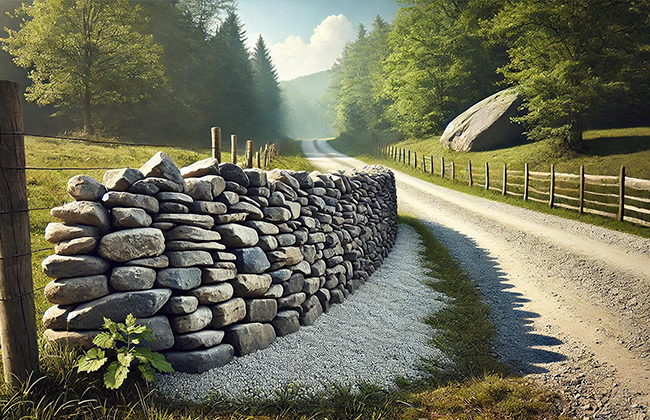
Stone masonry is not only renowned for its aesthetic appeal and durability but also has significant environmental considerations. This section explores the sustainability aspects of stone masonry, focusing on the practices that enhance its ecological benefits and the potential for recycling and reusing materials.
Sustainability of Stone Masonry
- Natural Material: Stone is a naturally occurring material, which means it doesn’t require complex manufacturing processes that often involve harmful chemicals or emissions. This makes stone a more environmentally friendly choice compared to synthetic building materials.
- Durability: One of the most significant environmental benefits of stone masonry is its durability. Structures built with stone can last centuries, far longer than those made with other materials, reducing the need for replacement, maintenance, and repair—all of which have environmental costs.
- Thermal Mass: Stone has excellent thermal mass, meaning it can absorb and retain heat, helping to naturally regulate the temperature inside buildings. This reduces the need for artificial heating and cooling, lowering energy consumption and greenhouse gas emissions.
Recycling and Reusing Stone Masonry Materials
- Recycling Stone: You can recycle stone materials from demolished buildings and reuse them in new construction or other applications such as landscaping. This practice not only reduces waste but also minimizes the environmental impact of quarrying for new stones.
- Reusing Cut Stone: You can carefully salvage cut stone when deconstructing a stone structure and reuse it in restoration projects or new constructions that require a historical aesthetic. This not only preserves the cultural heritage but also reduces the environmental footprint associated with producing new building materials.
- Waste Reduction: You can minimize waste material during stone cutting and shaping by using precise cutting technology. Additionally, you can repurpose smaller stone pieces and dust for other construction needs, such as aggregate in concrete or road fill, further reducing waste.
By integrating these sustainable practices, stone masonry contributes to building durable and beautiful structures. It also supports environmental conservation efforts. As we continue to face global challenges like climate change and resource depletion, the role of sustainable building practices in stone masonry becomes ever more crucial.
Exploring these practices through various case studies provides a clearer picture. It shows how stone masonry can be both a craft of the past and a solution for the future. Let’s explore some examples where we have effectively harnessed the environmental benefits of stone masonry.
Case Studies
Stone masonry has been a pivotal part of architectural history and continues to be integral in modern construction due to its durability and aesthetic versatility. This section delves into both historical and contemporary case studies that highlight the enduring appeal and functionality of stone masonry.
Historical Case Study: The Roman Colosseum
The Roman Colosseum, an iconic symbol of architectural ingenuity, showcases the durability of stone masonry. Constructed primarily from travertine limestone, tuff (volcanic rock), and brick-faced concrete, this structure has withstood earthquakes. It also endures pollution and centuries of weathering. The choice of materials and masonry techniques used in the Colosseum played a crucial role in its longevity, demonstrating the ancient Romans’ mastery of stone masonry. This historical example provides invaluable insights into the sustainable practices of the past and their relevance to modern masonry.
Contemporary Case Study: The Getty Center, Los Angeles
Moving to a modern example, The Getty Center in Los Angeles exemplifies the use of stone masonry in contemporary architecture. Designed by Richard Meier, the complex features travertine stone that complements its design ethos of cleanliness and light. The project used approximately 1.2 million square feet of travertine, highlighting the material’s versatility and aesthetic appeal. The Getty Center stands as a testament to the beauty of stone masonry. It also showcases its capability to meet modern construction standards and environmental considerations.
These case studies underscore stone masonry’s significant role across different eras and its ability to adapt to various architectural styles and functions. By examining these examples, we gain a deeper appreciation for stone masonry’s past contributions. They show its potential to shape future architectural endeavors.
As we look ahead, the future of stone masonry appears promising, with advancements in technology and a growing emphasis on sustainable building practices. These innovations will further enhance the capabilities and applications of stone masonry, ensuring that this age-old craft remains a vital part of our built environment. Let’s explore what the future holds for this enduring art form.

Transform your home with expert masonry services. Contact us today for a free consultation.

Future of Stone Masonry
As we look to the future, the craft of stone masonry is poised to embrace technological advancements and evolving trends that will shape its role in modern construction and restoration. These innovations promise to enhance the efficiency, sustainability, and artistic possibilities of stone masonry, ensuring its relevance in the years to come.
Technological Advancements
- Precision Cutting Tools: Advances in cutting technology, such as waterjet cutters and laser-guided saws, allow for more precise and intricate cuts. This not only reduces material waste but also enables complex designs. Previously, such designs were difficult or too costly to achieve with traditional methods.
- Robotics and Automation: Robotics is beginning to make its mark in stone masonry, offering the potential for increased speed and accuracy in stone placement and fitting. Robots can also work in environments dangerous for humans. These include great heights or areas with poor air quality, thus improving safety in the construction field.
- 3D Modeling and Virtual Reality: These tools are revolutionizing the planning phase of construction projects. With 3D modeling, masons can visualize and adjust the placement of each stone before the actual construction begins. You can also use virtual reality for client presentations. This provides a lifelike view of the finished product to aid in decision-making processes.
Sustainability Trends
- Recycled and Synthetic Stone Materials: There is a growing interest in using recycled materials and synthetic stone in masonry. These materials not only reduce environmental impact but also offer new aesthetic options and sometimes improved durability.
- Green Building Certifications: Stone masonry is well-positioned to contribute to green building practices, which are becoming increasingly popular. The natural durability and thermal mass properties of stone make it an excellent candidate. Buildings can achieve sustainability certifications like LEED or BREEAM with it.
Cultural and Artistic Revival
- Artisanal Revival: As appreciation for handcrafted, bespoke elements in architecture grows, so does the demand for traditional stone masonry skills. This artisanal revival is promoting a new generation of masons who combine traditional techniques with modern design sensibilities.
- Educational Programs and Apprenticeships: More educational institutions and industry bodies are offering programs focused on masonry. They aim to preserve and pass on necessary skills while integrating modern techniques. This includes knowledge about sustainable practices.
The future of stone masonry looks bright, with a blend of tradition and innovation that promises to carry this age-old craft into the next era of construction. By leveraging cutting-edge technologies and emphasizing sustainability, stone masonry will continue to offer unmatched durability. It also provides beauty and environmental benefits in building practices. As we move forward, these advancements will undoubtedly open up new possibilities for achieving more with this fundamental building method.
Conclusion
As we’ve explored the different types of stone masonry, it’s clear that this age-old craft combines durability, aesthetic versatility, and sustainability. This makes it an excellent choice for a wide range of construction projects. Whether you’re restoring a historic building or constructing a new one, stone masonry offers a reliable and beautiful solution. If you are looking for a professional contractor experienced in stone masonry, feel free to contact us at (+1) 917-355-8556 for expert assistance.
FAQs
Q: What are the main benefits of using types of stone masonry in construction?
A: Types of stone masonry offer remarkable durability and natural beauty. They provide structures with improved thermal mass and longevity. These qualities help structures withstand the test of time.
Q: How do different types of stone masonry impact the environmental sustainability of a building?
A: Many types of stone masonry utilize natural materials. These minimize environmental impact and support sustainable building practices. They achieve this through energy conservation and reduced waste.
Q: What are the cost implications of choosing various types of stone masonry for a project?
A: The cost of different types of stone masonry varies. Rubble masonry tends to be less expensive. Finely dressed stone masonry like ashlar may cost more due to higher labor and material quality.
Q: Can you customize types of stone masonry for any architectural style?
A: Yes, you can adapt types of stone masonry to complement various architectural styles. These range from rustic traditional homes to modern commercial buildings. This flexibility is thanks to the versatility in stone types and masonry techniques.
Q: What maintenance do different types of stone masonry require to ensure longevity?
A: Regular inspections, proper cleaning, and timely repairs are crucial. They maintain the integrity and appearance of different types of stone masonry. This extends the structure’s lifespan.
Q: What are the types of stone masonry?
A: The main types of stone masonry include rubble masonry and ashlar masonry. Rubble masonry uses rough, uncut stones. Ashlar masonry employs finely dressed stones. Different architectural and structural demands suit each type.
Q: What are the three types of masonry?
A: The three types of masonry are stone masonry, brick masonry, and concrete block masonry. Each type offers unique benefits and project requirements and aesthetic preferences determine the choice.
Q: What is the cheapest stone masonry?
A: Rubble masonry is generally the cheapest form of stone masonry. It requires minimal processing and uses stones in their natural, irregular shapes. This reduces overall material costs.

Transform your home with expert masonry services. Contact us today for a free consultation.


